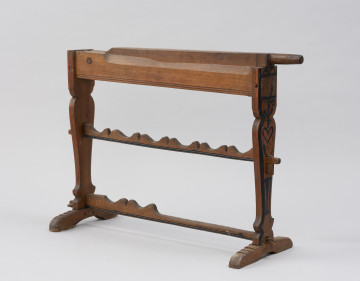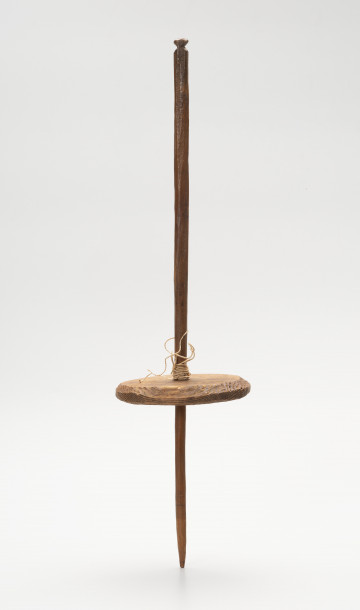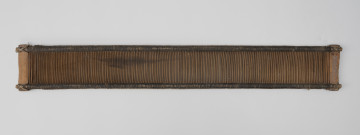
Double-blade flax breaker
1801 — 1900
National Museum in Szczecin
Part of the collection: Folk weaving
Combing is the last stage of mechanical processing of flax and hemp fibres before spinning. Its purpose is to clean them and separate the long fibres from the short fibres. In the past, combing was done by hand on specially made brushes, which took the form of long boards with iron teeth of varying density. The working parts of the brush were circular or rectangular in shape. Often two pieces with teeth of different thickness and density of spacing were mounted on a single board. The fibres were combed by pulling a handful of them between the teeth, first on the thinner brush and then on the denser brush. When combing, short fibres of the worst quality were left between the teeth of the brush. The cleaned, long fibres were stored in an airy place to get the right moisture content to facilitate spinning. Linen was woven from threads spun on spinning wheels and then used to make shirts, towels, handkerchiefs and tablecloths. The presented brush for combing linen and hemp has a typical shape and is equipped with two working parts. It was made in the 2nd half of the 19th century in West Pomerania. No information is known about the creator or who used the brush. Agnieszka Słowińska
Author / creator
Object type
hackle
Technique
planing, nailing, bending
Material
wood, iron
Origin / acquisition method
donation
Creation time / dating
Creation / finding place
Owner
Muzeum Narodowe w Szczecinie
Identification number
Location / status

1801 — 1900
National Museum in Szczecin

1890 — 1939
National Museum in Szczecin

1850 — 1920
National Museum in Szczecin
DISCOVER this TOPIC
Museum of King Jan III's Palace at Wilanów
DISCOVER this PATH
Educational path